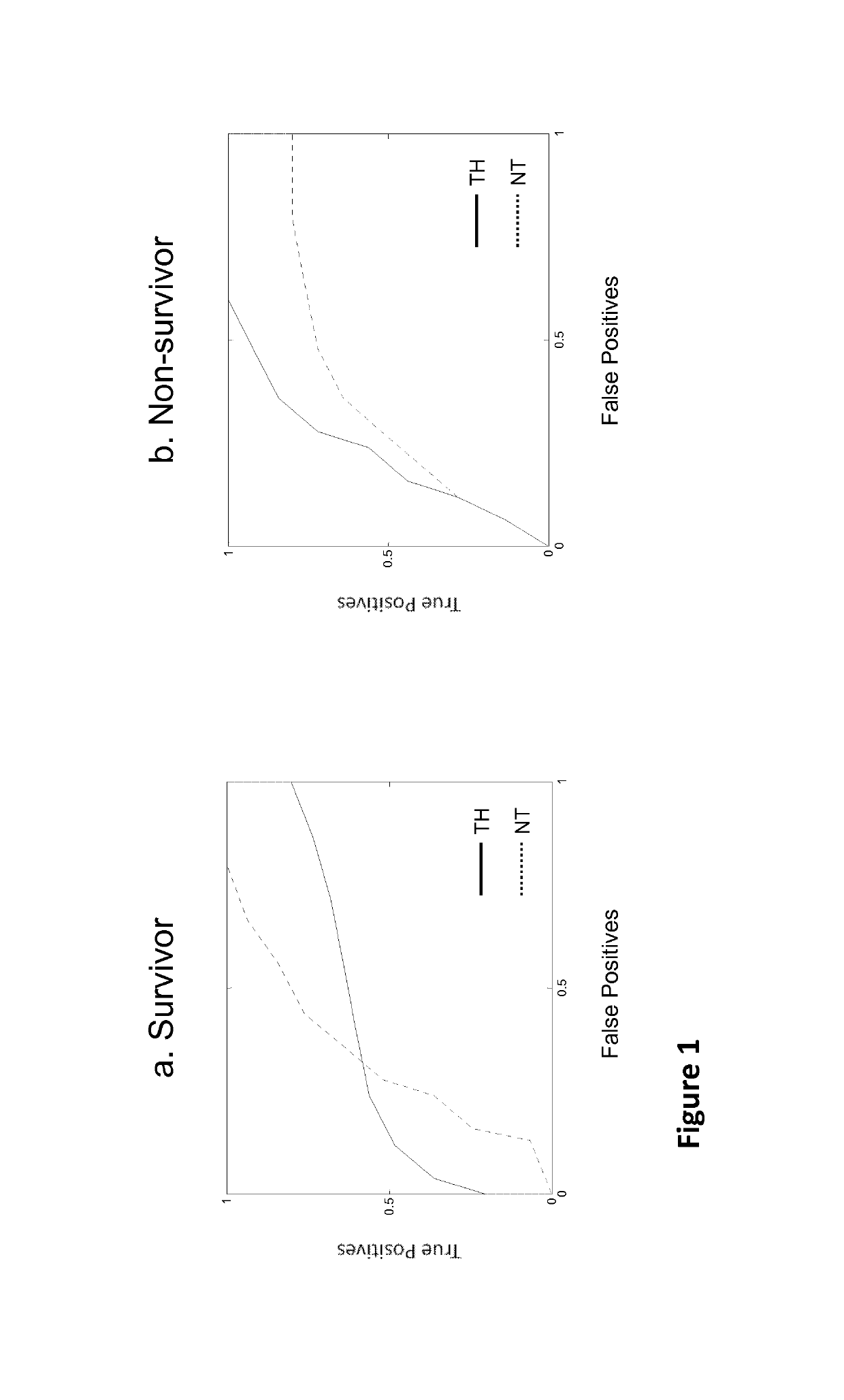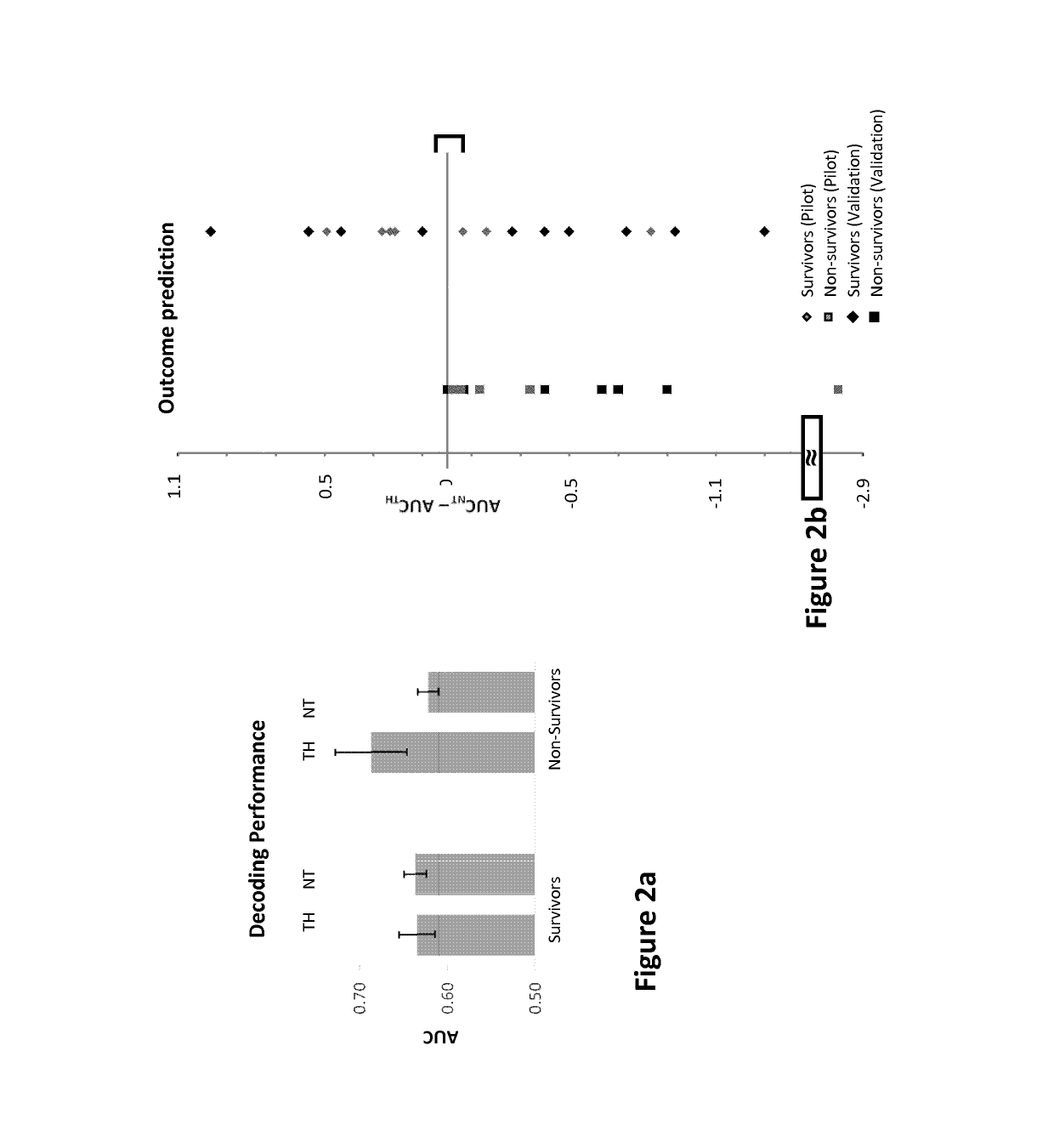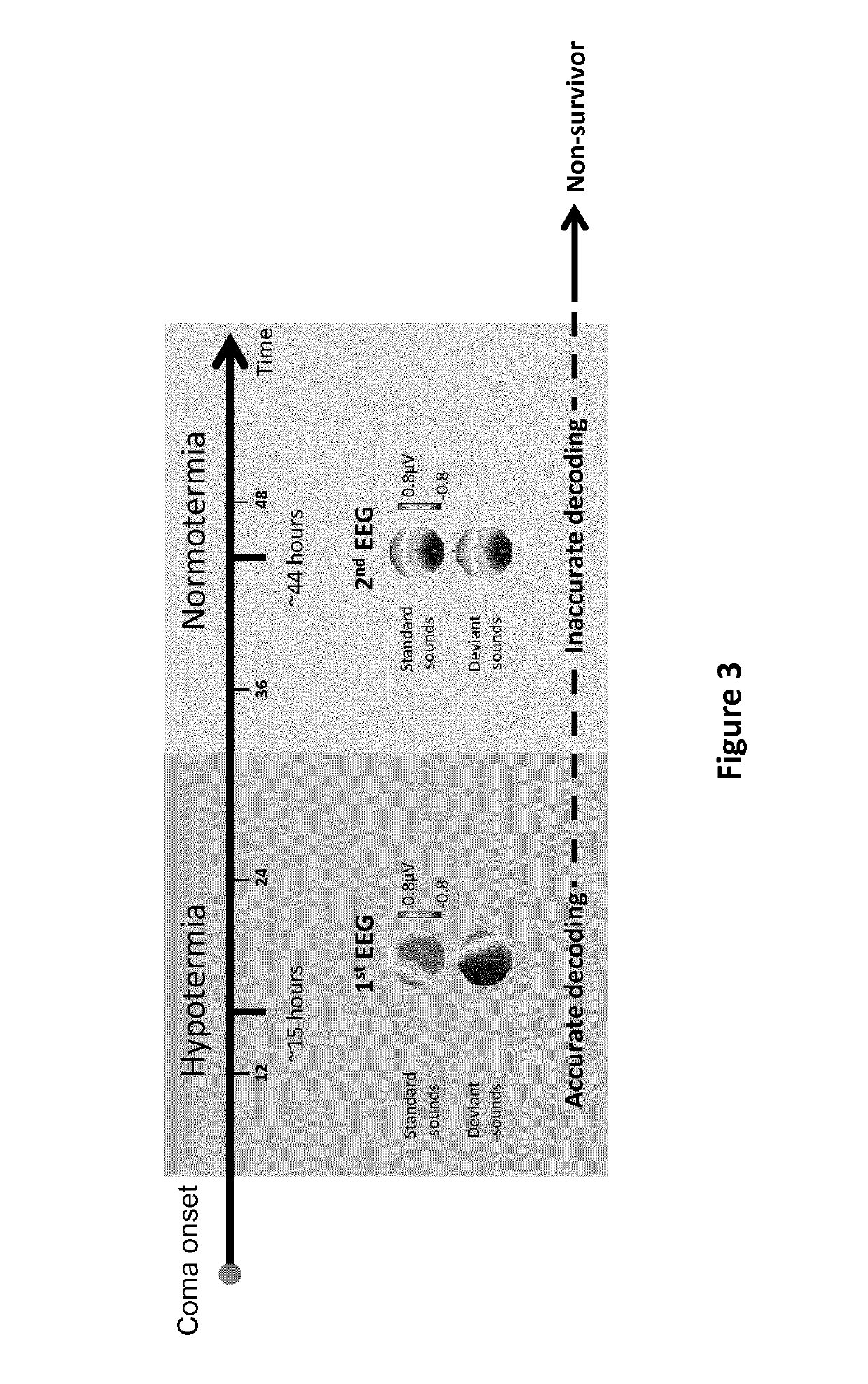Method for predicting awakening in a comatose patient and computer-implemented method thereof
a comatose patient and computer-implemented technology, applied in the field of predicting awakening in a comatose patient, can solve the problems of unclear whether this deficit is independent and the hypotheses can be challenging, and achieve the effects of improving the minimum signal level, and improving the patient's respons
- Summary
- Abstract
- Description
- Claims
- Application Information
AI Technical Summary
Benefits of technology
Problems solved by technology
Method used
Image
Examples
example
EEG Data Acquisition
[0054]30 post-anoxic comatose patients have been included in the study (10 women; mean age 63±2 years old). They had been admitted from December 2009 to July 2011 to the Department of Critical Care Medicine, Centre Hospitalier Universitaire Vaudois (CHUV-Lausanne University Hospital), Lausanne, Switzerland. All patients were treated with mild TH after resuscitation from cardiac arrest, to 33° C. for 24 hours. The study was approved by the Ethics Committee of the institution.
[0055]Level of consciousness was assessed based on the Glasgow Coma Scale (GCS) at regular intervals (every two to three hours) during the first 2-3 days after coma onset. All patients scored 3 or 4 during these first 2-3 days, indicating a deep unconscious state.
[0056]All patients were managed according to a standard protocol (Oddo et al., 2006); they were resuscitated following current recommendations (2005 American Heart Association Guidelines for Cardiopulmonary Resuscitation and Emergency...
PUM
 Login to View More
Login to View More Abstract
Description
Claims
Application Information
 Login to View More
Login to View More - R&D
- Intellectual Property
- Life Sciences
- Materials
- Tech Scout
- Unparalleled Data Quality
- Higher Quality Content
- 60% Fewer Hallucinations
Browse by: Latest US Patents, China's latest patents, Technical Efficacy Thesaurus, Application Domain, Technology Topic, Popular Technical Reports.
© 2025 PatSnap. All rights reserved.Legal|Privacy policy|Modern Slavery Act Transparency Statement|Sitemap|About US| Contact US: help@patsnap.com



